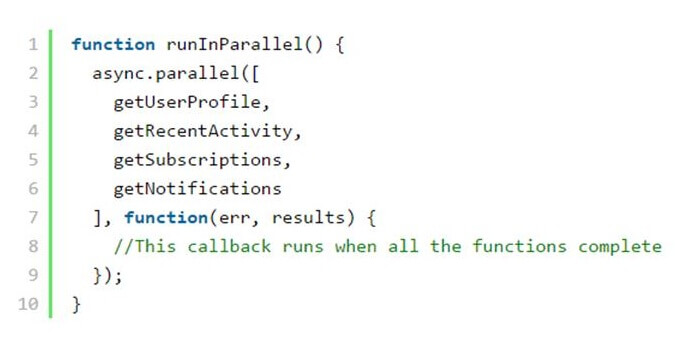You might already know about the popularity of JavaScript. It’s the #1 programming language of the web according to the latest Stack Overflow Survey.
But, did you know that the main reason behind JavaScript’s rapid adoption is because of Node.js?
For anyone who doesn’t know, Node.js is a leading JavaScript framework used for building fast and scalable web applications. It is built upon Chrome’s V8 JavaScript engine and is best known for its high performance and developer productivity.
The event-driven architecture and asynchronous I/O of Node.js help greatly in optimizing scalability and throughput during web application development.
However, Node.js does have a few weak points, which if not considered, can make a Node.js application prone to underperformance. This problem mostly arise when a Node.js app experiences rapid traffic growth.
If you’re facing the same problem of underperformance, use the following tips to immediately improve the performance of your Node.js application.
5 Tips to Improve Node.js App Performance
1 – Run Things in Parallel
If your Node.js app often requires multiple internal calls in order to fetch API data, you should consider using different middleware for each of the functions.
Though JavaScript comes with a built-in asynchronous component that doesn’t stop subsequent function calls from executing while it completes. But, if you wish to optimize the current performance, you can use the async.js module, which can help you better manage your asynchronous code.
Here’s an example of how you can run different functions in parallel using the async.js module:
2 – Implement a Node.js Load Balancer
One of the best ways to achieve high performance in Node.js applications is by running multiple application servers as well as balance loads among each other.
Although, executing the Node.js load balancing can sometimes become tricky as Node.js enables data exchange with JSON objects through a high-level of interaction between JavaScript code running on the application servers and JavaScript code running in the web browser.
But, the load balancing implementation becomes easier with Nginx.
Nginx is basically an open-source HTTP server that has an in-built load balancing. The Nginx is also very easy to configure and has lots of features that actually make the configuration process easy.
Using Nginx, you can select particular processes to receive and handle more requests than others, add timeouts, enforce sticky sessions, and a lot more.
3 – Go Asynchronous
Since Node.js is single-threaded, it has lots of synchronous components that may potentially lock up your entire Node.js application.
While you can avoid using synchronous methods in the entire code of your Node.js application, but you might still need to use at least one external library having a blocking call. And this can affect the performance of your application.
So, when choosing an external library or a third-party module, make sure that it doesn’t revert any synchronous calls.
The best way to overcome this situation is to always use asynchronous APIs, especially in performance-critical functions.
4 – Cache Static Files
If your web application is fairly new with just a few dozen users, the performance will stay intact. The problem only starts occurring when the traffic grows.
When this happens, you’ve two choices:
You utilize as much as you can from the Node.js server.
Or, you add application servers and load balance them amongst each other.
Now, we’ve already discussed how implementing a load balancer using Nginx can significantly improve the performance. Implementing Nginx basically makes it easy to not only add load balancing but also caching.
Caching static files on the Nginx server drastically offloads the work from the application server and helps to achieve even higher performance.
5 – Plug Memory Leaks
In Node.js, each process has capacity of 1.5 GB memory heap, regardless of the total memory available. But, the V8 engine in Node.js has a built-in Garbage Collector (GC), which cleans inactive memory automatically in order to make it available to use.
Sometimes, though, the data in the memory expired for a long time escapes the garbage collector and results in a memory leak.
In simple terms, many times the memory usage keeps increasing and the garbage collector fails to clean it. And this needs an urgent fix.
But, tracking the memory leak is tougher than you think. The best way to track memory leaks in a Node.js application is to by taking memory heap snapshots and analyze them to identify objects and classes growing at a steady pace.
In fact, if you fail to diagnose the memory leak, there are high chances of your Node.js application running out of memory and being shut down.
If that occurs, you can always hire Node js developer to help you set up automatic alerts when a memory usage threshold is approaching the defined limit.
Apart from this, you should also consider taking stock of your application’s infrastructure and gather intel on its performance to detect if there are any resources available and ready to be scaled up for optimization.
Conclusion
Node.js application performance management is a challenge that could only be overcome through the ability to diagnose the root cause of the underperformance. But in most cases, the tips mentioned in this blog post can definitely help you improve the performance of your application.









Tags: